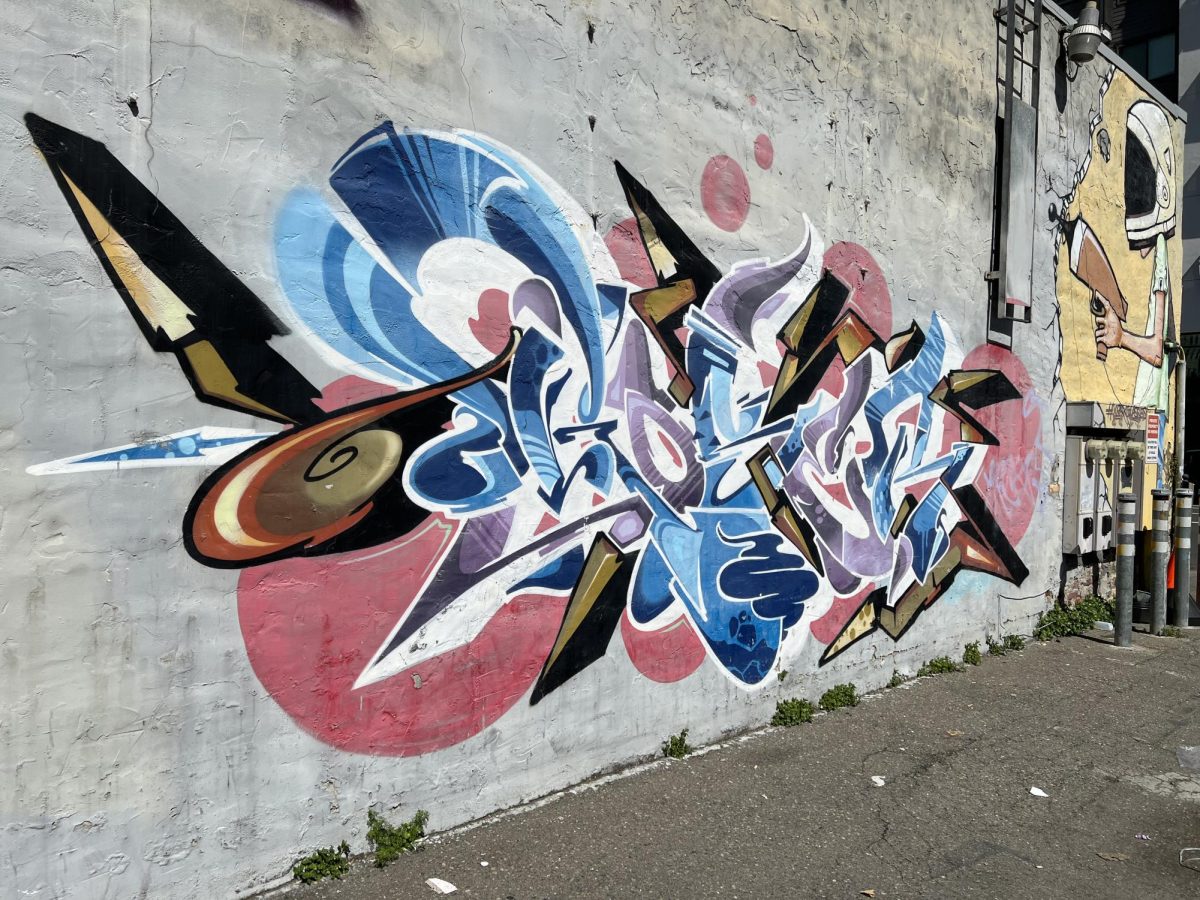Graffiti, considered art by some and criminal by others. Despite either opinion, it encompasses a major part of Bay Area history and remains important to preserve.
Graffiti’s popularity in the Bay Area began in the early 1980s as a children’s game but soon became less so as the purchase of spray paint became illegal for anyone under 18. This is primarily because of the influx of supposed gang-associated art pieces and the tagging of heaps of public property.
Artists from New York became prevalent, escaping to the Bay Area to continue their work after the “War on Graffiti” was declared by former Mayor John Lindsay. Lindsay made it so the New York Police Department spent over $300 million in removing and preventing graffiti, limiting the area and opportunity for graffitists to practice.
Thus, with the large influx of artists all grouped together in the Bay Area, numerous gangs began to form. They hoped to make a name for themselves and fought for territory to work on. Currently, graffiti coats the walls of buildings, buses, bridges and so much more public property. It has made a boom in the Bay Area and is currently an important sociological aspect of the area that should be respected and maintained as means of preserving culture and promoting artistic expression.
Through its long-time presence in the heart of the Bay Area, graffiti has become culturally important to it and reflects a common experience throughout much of history.
According to an article by Live Science by Scholastic editor Mindy Weisberger, the history of graffiti can be traced back to 12,000 years ago. Humans would create art to express themselves when they did not have a written language. Furthermore, the use of hieroglyphics from Egypt occurred around 5,000 years ago and was a language expressed in the form of symbols.
Numerous types of people all around the world have used graffiti to express themselves. Once time is turned forward and we examine the melting pot of people of color that is the Bay Area, we can see how graffiti is just an extension of expressing their individual cultures and struggles. It is art made by people often oppressed within a system that does not allow them to speak out, thus using their art to do what neither words nor text cannot.
Along with its role in expression, graffiti is also a method people use to protect their homes from gentrification. As stated, the places in the Bay Area where graffiti is most prevalent are often the ones where marginalized groups reside. Harvard Politics reported that throughout the years, richer white individuals have been displacing low-income households as means to secure more property and gentrify it, causing prices for homes to skyrocket beyond what the previous community can afford.
The infuriated locals began to take matters into their own hands, and the presence of graffiti became even more common-place than previously, hoping to wade away developers from taking a city so infested with art stereotyped by gang affiliation. The art itself also allows a visual representation of the peoples’ struggles to be displayed and spark discourse on the morality of changing the area as an active community that is willing to fight for their homes.
In addition to the meaning of the art is the beauty of it. Graffiti is not only a label but can also be large and elaborate pieces. In modern day with a highlight on artistic individuality, people have grown to appreciate crafts that do not fit into the typical. By creating and decorating the lines of communities with illustrations, people are able to highlight the beauty of the communities in their original forms and oppose the models of clean, white-fenced gentrification ideals.
Even when examining the positives, there still exist problems with the expression of graffiti: the destruction of property and its challenging of authority. According to an article by ABC News, despite its commonality in the Bay Area, graffiti itself remains illegal and an obstruction to the betterment of the city. Both public and private property is currently being defaced, and policemen seem to be working overtime as means to prevent graffiti and arrest individuals for making it, but at the moment, no significant progress is being made.
This struggle, however, only serves to prove a larger point about graffiti itself: it is a representation of the oppressed, and it is prevalent as means to continue making a statement despite its criminalization. Graffiti is a crime not only because it defaces property but also because of what it represents – struggle for art, a struggle against subjugation, a struggle to be seen and to be understood by people who do not care. The illegalization of the art only serves to make people more angry along with the increasing efforts to suppress it.
In order to form a bridge between different social classes and ultimately improve the Bay Area in itself, it is time for authorities to listen to the messages contained within the art. Graffiti is an art form and deserves to be respected as such. It communicates numerous ideologies and ultimately helps unite a community. Graffiti in itself should not be criminalized but understood. Authorities should strive to find a balance between artistic liberty and property rights as a means to appease both artists and opposers alike.


